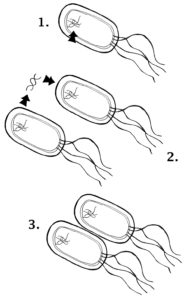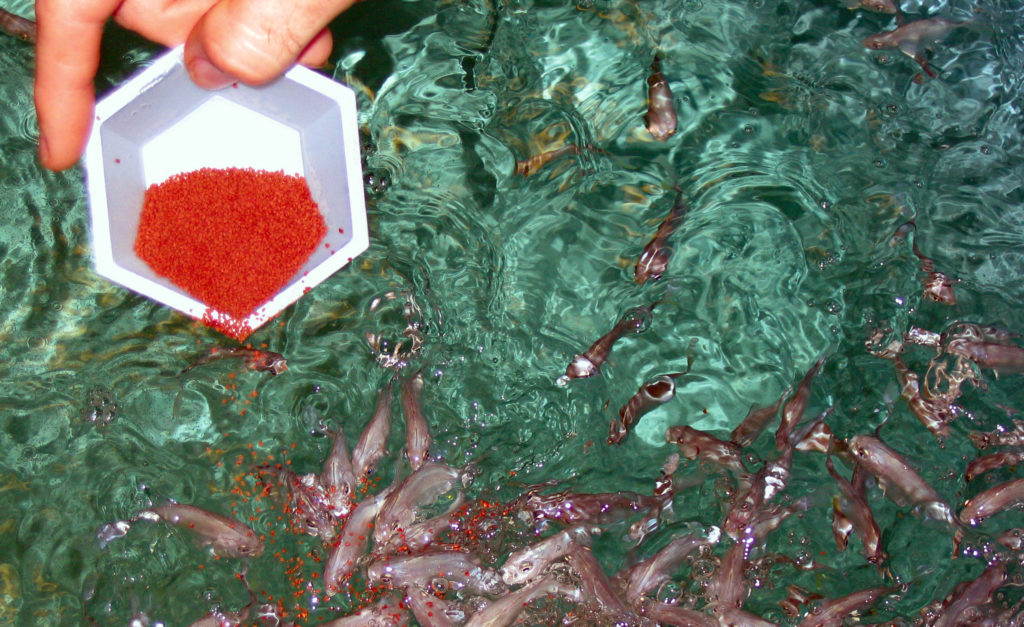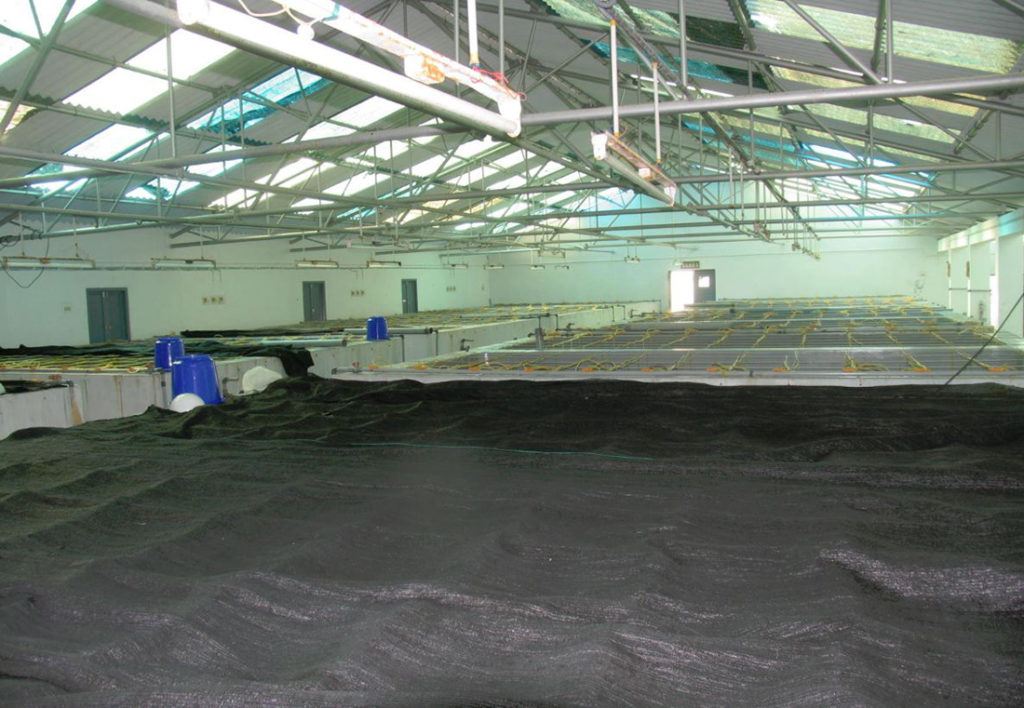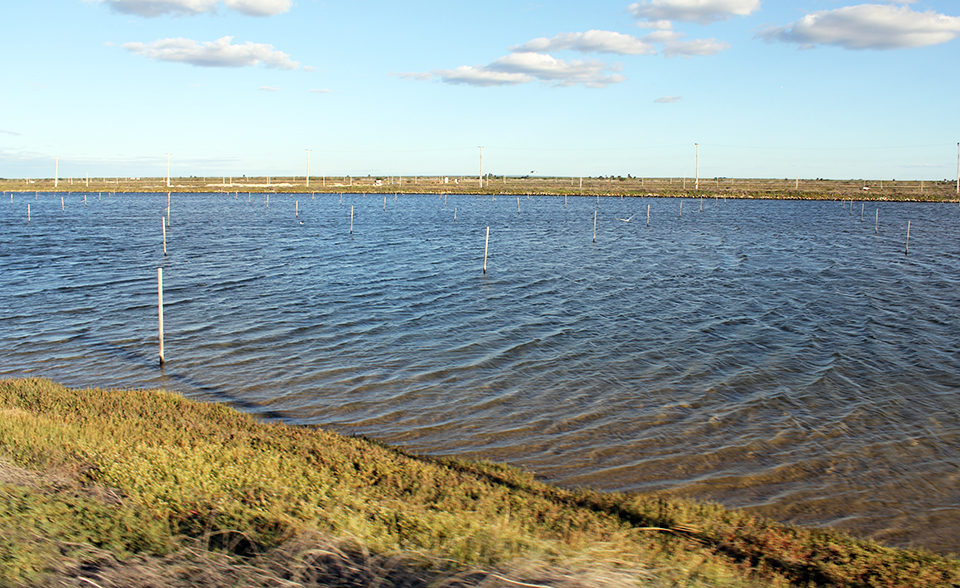Detection methodology is steadily improving

1. In spontaneous DNA mutation, bacterial DNA can mutate spontaneously.
2. In a form of microbial sex called transformation, one bacterium can take up DNA from another bacterium.
3. A small circle of DNA called a plasmid can move from one bacterium to another. A single plasmid can provide many different resistances.
Drugs used in aquaculture and other forms of agriculture have been under debate for many years. Domestic and international health regulatory agencies, health professionals, and the general public have expressed concerns over drug use in food animals.
One is the question of inadvertently spurring the development of antibiotic-resistant microorganisms by using antibiotics in feed (Fig. 1). Various groups have also expressed concerns over the carcinogenicity of certain drug residues, as well as their ability to elicit allergenic responses.
Microbial resistance
When an antibiotic is administered to an individual, the usual effective dose may not be sufficient to control the infection if the invasive microorganism has developed antibiotic resistance. This is a definite concern, illustrated by the fact that a number of bacteria species have developed penicillinase enzymes that destroy the antibiotic penicillin.
The first microorganism exhibiting resistance to penicillin was reported almost 40 years ago. Since then, some microorganisms have also become resistant to the antibiotics tetracycline, streptomycin, gentamicin, chloramphenicol, neomycin, terramycin, tetracycline, and the cephalosporins.
At the center of recent concern was the discovery of microbial resistance to the antibiotic vancomycin, which for many infections was literally one of the drugs of “last resort.” Now, vancomycin resistance has turned up in another common hospital microorganism, Enterococcus.
Flesh-eating bacteria
Perhaps one of the most publicized antibiotic-resistant microorganisms is the “flesh-eating” Streptococcus, which received broad publicity in both the printed and electronic media. The name is sensational, but essentially, the bacteria do eat flesh. They are introduced from a person carrying the microorganism or from an area where the organism is present. This type of bacteria is the same as those that cause Strep throat.
One bacteria, Streptococcus pyogenes or Group A Streptococcus, was recently reported to be a flesh-eating bacteria which claimed the lives of up to 25 percent of its victims. In 1990, it was also responsible for the death of the famous puppeteer and creator of the Muppets, Jim Henson.
The most severe flesh-eating bacterial disease is Necrotising Fasciitis or Streptococcal Gangrene. This is a rare infection of the skin and deeper tissues characterized by extensive and rapidly spreading death of tissue and underlying structures. Treatment includes surgery to remove all dead tissue and antibiotic therapy. The goal is to stay ahead of the spreading infection, but even if appropriate medical treatment is quickly taken, death rates are high in these cases.
Consumer concerns
The Centers for Disease Control and Prevention in Atlanta, Georgia, USA, reported that in 1992, 13,300 hospital patients in the United States died of bacterial infections that were resistant to antibiotic treatment. With this much information on antibiotic-resistant microorganisms, the consumers’ concerns of antibiotic use in food animals can easily be understood.
The public was informed by various responsible and irresponsible groups that farmers and aquaculturists contribute to the production of antibiotic-resistant microorganisms, and thus predispose the general public to increased morbidity and mortality. Unfortunately, there is much disagreement within the scientific community on the exact risk that is actually being presented.
More time will be required to quantify the actual risk and decide how much of that risk is acceptable. This is not an easy undertaking, given the broad range of perspectives that have been presented to date.
Aquaculture concerns
There are other major concerns over the use of antibiotics and chemical treatments such as growth regulators in aquaculture, whether in ponds, raceways, pens, or recirculating systems. Aquaculture antibiotics and other chemicals and their metabolites are excreted into the culture water, which in turn is introduced into various waterways.
The effects of these chemicals on fish and other aquatic organisms are unknown. It would not be surprising if the discharge of chemotherapeutics becomes an important issue at some point in the not-too-distant future.
Approved aquaculture drugs
The United States has approved a limited number of drugs for the aquaculture of specific species (Table 1). Many more drugs are used in other countries (Table 2). The U.S. does not prohibit the import of products that were treated with the drugs listed in Table 2, provided that residues of these drugs are undetectable in the flesh.
Flick, Drugs approved for use, Table 1
| Drug (Trade Name) | Species | Indication |
|---|
Drug (Trade Name) | Species | Indication |
|---|---|---|
| Chorionic gonadotropin (Chorulon®) | Male and female brood finfish | Promote spawning |
| Oxytetracycline monoalkyl trimethyl ammonium (Terramycin®) | Pacific salmon, salmonids, catfish, lobsters | Mark skeletal tissue, control bacterial infections |
| Sulfadimethoxine (Romet-30®) | Salmonids, catfish | Control bacterial infections |
| Tricaine methanesulfonate | Fish (Ictaluridae, Salmonidae, Esocidae, Percidae and other aquatic poikilotherms) | Sedation/anesthesia |
| Formalin (Parasite-S®, Formalin-F®, Paracide-F®) | All finfish, finfish eggs, penaeid shrimp | Control protozoa, monogenetic trematodes, fungi |
| Sulfamerazine | Rainbow, brook, and brown trout | Control furunculosis |
Flick, Drugs used in aquaculture, Table 2
| Acriflavine | Fosfomycin | Miroxisacin |
| Amoxicillin | Fruluphenicol | Nalidixic Acid |
| Ampicillin | Furanace | Nifurstyrenate |
| Benzocaine | Furazolidone | Nitrofurantoin |
| Bicozamycin | Josamycin | Novobiocin |
| Chloramphenicol | Kanamycin | Oleandomycin |
| Colistin Sulfate | Kitasamycin | Oxolinic acid |
| Doxycycline | Lincomycin | Oxytetracycline |
| Erythromycin | Malachite Green | Spiramycin |
| Florfenicol | Methyldihydrotestosterone | Sulfonamides |
| Flumequine | Methylene Blue | Thiamphenicol |
In many cases, there is a detectable residue when products arrive at the border. For many of the listed compounds, however, there are either no accepted analytical methods to test for the chemicals, or the sensitivity of the test methods is lacking. Consequently, products can enter the country that would be considered violative if accurate and precise analytical testing was available.
Chloramphenicol
Chloramphenicol serves as an excellent example. This antibiotic was used for years in many countries before an accepted analytical test was developed. During that time, the compound became established in the environment.
When a testing procedure was established capable of detecting concentrations as low as 0.3 parts per billion, the compound was found in many fish and shellfish species, even in those never directly introduced to the chemical agent.
With a zero tolerance for the drug, any detectable quantity of chloramphenicol in a food product was judged to be violative. When a wide variety of ocean-caught products was rejected in the U.S. and European Union due to detectable levels of the antibiotic, arguments were raised that the compound’s presence was due to aerosols, stream pollution leading to ocean contamination, and contamination on processing plant workers’ hands. Regardless of the reason for the presence of the chemical, a product with a detectable level could not be introduced into commerce.
Trade regulation
Zero tolerance can also be used to regulate trade. Increased surveillance and improvements in analytical methodology can lead to the identification of violative products, which may be removed from the marketplace. The U.S. Food and Drug Administration, for example, detains and refuses entry to any product it identifies and confirms as containing an unapproved drug. The European Union has also implemented strict policies on fish and shellfish imports containing drug residues. Some countries are no longer able to export certain products due to improved detection methodology.
Conclusion
The problem of antibiotic and chemical residues in aquatic food products will continue to increase for several reasons. First, population growth results in more individuals receiving chemotherapeutics for various illnesses and disease. Second, many third-world countries are being introduced to drugs due to increased charitable donations and increased support from international health organizations. Third, advertisements in public media are encouraging individuals to query their health professionals for drugs that promise freedom from disease and physiological disorders.
Unfortunately there is no simple solution to the problem. The issue will continue for some time to come.
(Editor’s Note: This article was originally published in the February 2004 print edition of the Global Aquaculture Advocate.)
Now that you've reached the end of the article ...
… please consider supporting GSA’s mission to advance responsible seafood practices through education, advocacy and third-party assurances. The Advocate aims to document the evolution of responsible seafood practices and share the expansive knowledge of our vast network of contributors.
By becoming a Global Seafood Alliance member, you’re ensuring that all of the pre-competitive work we do through member benefits, resources and events can continue. Individual membership costs just $50 a year.
Not a GSA member? Join us.
Author
-

George J. Flick, Jr., Ph.D.
Food Science and Technology Department
Virginia Tech/Virginia Sea Grant (0418)
Blacksburg, Virginia 24061 USA
Tagged With
Related Posts

Health & Welfare
Antibiotics in aquaculture: Is responsible use possible?
Regulations on antibiotics in aquaculture vary by country and region, from outright bans to minimal oversight.

Health & Welfare
A holistic management approach to EMS
Early Mortality Syndrome has devastated farmed shrimp in Asia and Latin America. With better understanding of the pathogen and the development and improvement of novel strategies, shrimp farmers are now able to better manage the disease.

Health & Welfare
A study of Zoea-2 Syndrome in hatcheries in India, part 3
In this third and final part, authors present recommendations to help reduce the incidence of Zoea-2 Syndrome, which is not caused by any known infectious agents in P. vannamei hatcheries in India.

Health & Welfare
AHPN inferences based on behavior of vibrio bacteria
Vibrio parahaemolyticus, a strain of which is the cause of acute hepatopancreatic necrosis (AHPN), has both virulent and benign strains. This strain colonizes the stomachs of shrimp by the formation of a biofilm, which protects it from antibiotics and other potential treatments.


